Round The World and other travels
A frequent flyer's collection of trip diaries
April 2015: The Scottish Borders
The Scottish Borders is the name given to the eastern part of the Southern Uplands, which along with the Central Lowlands and the Highlands is one of the three great geographic subdivisions of mainland Scotland. The Borders is an attractive rural area, characterised by rolling and sometimes hilly landscapes. Its main river is the Tweed and the largest settlement, Galashiels, has fewer than 25,000 inhabitants. The area has a long boundary with the county of Northumberland and a shorter one with Cumbria, both of which lie in England. Prior to the Act of Union, this proximity to a troubled international border gave rise to many periods when the area was nothing like as quiet and peaceful as it looks today.
As will be evident from the photos, this short trip was packed with interest and blessed with unseasonably warm, sunny weather.
Floors Castle
Floors Castle, on the banks of the Tweed just outside Kelso, is a grand country house dating from 1721. It is the home of the Duke of Roxburghe. A self-guided tour allows visitors to experience the beautifully furnished rooms, art and porcelain collections, and tapestries, as well as the building itself and the extensive grounds.
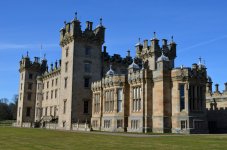 |
 |
 |
 |
 |
 |
 |
 |
 |
The Four Borders Abbeys
The Scottish Borders is home to four dramatic ruins of former abbeys. The Borders abbeys met with a common fate in the sixteenth century when they were targeted for destruction in the Anglo-Scottish Wars, with the arrival of the Scottish Reformation then ensuring that there would be no rebuilding. All four ruins are now in the care of Historic Scotland and I managed to visit all of them on this trip, in each case for the first time.
Kelso Abbey
Once the grandest of the four, Kelso Abbey has the smallest surviving remains and entry to the site is free of charge.
 |
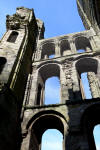 |
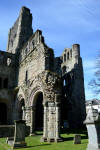 |
 |
 |
 |
 |
 |
 |
 |
Jedburgh Abbey
Jedburgh Abbey was an Augustinian monastery dating from the 12th century. Sacked on several occasions by English armies, its final demise was brought about by the Scottish Reformation. The ruins are probably the most intact of the four Borders abbeys.
 |
 |
 |
 |
 |
 |
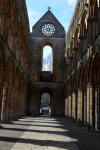 |
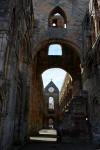 |
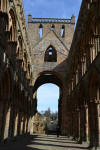 |
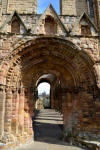 |
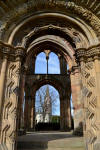 |
 |
 |
Melrose Abbey
This Cistercian abbey in Gothic style dates from the 12th century. A container believed to hold the heart of Robert the Bruce was found on the site in 1921.
 |
 |
 |
 |
 |
 |
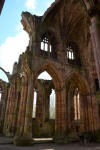 |
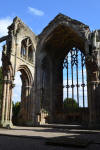 |
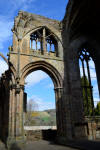 |
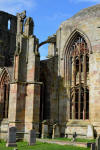 |
 |
 |
 |
 |
Dryburgh Abbey
This abbey, again dating from the 12th century, enjoyed a picturesque rural location on the banks of the Tweed, not far from the town of St Boswells. The site contains the tomb of Sir Walter Scott.
 |
 |
 |
 |
 |
 |
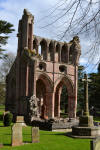 |
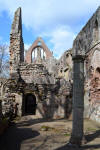 |
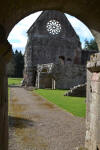 |
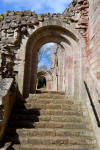 |
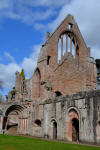 |
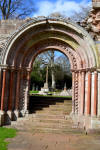 |
Abbotsford House
Abbotsford, the former home of Sir Walter Scott, is a historic country house with a beautiful setting on the banks of the River Tweed, close to the village of Tweedbank and the town of Melrose. The house and grounds now form a major tourist attraction. A visitor centre has been built to provide restaurant and gift shop facilities, as well as an introduction to the site.
 |
 |
 |
 |
 |
 |
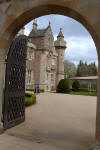 |
 |
 |
 |
 |
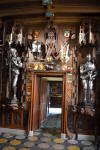 |
 |
 |
 |
 |
Other points of interest
Mary Queen of Scots House, Jedburgh
Mary Queen of Scots visited Jedburgh in 1566. The tower-house that was put at her disposal is now a visitor centre, with displays telling the story of her life. The exhibits include a painting of the house in very different surroundings from those of today, and an astonishing (if somewhat ghoulish) death mask.
 |
 |
 |
 |
 |
 |
Robert Smail's Printing Works, Innerleithen
One of the more unusual properties in the care of the National Trust for Scotland is this printworks in Innerleithen, near Peebles. Described as a 'living museum', it still carries out commercial printing activities using traditional techniques and equipment.
 |
 |
 |
 |
 |
 |
Smailholm Tower
Situated in a quiet rural location about six miles from St Boswells, this 15th-century 'peel tower' was used for keeping watch over the surrounding countryside; in other words, as an early warning system for possible cross-border raids. Like the four Borders abbeys, it is now in the care of Historic Scotland.
 |
 |
 |
 |
 |
 |
William Wallace Statue and Scott's View, Bemersyde
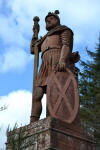 |
LEFT: Wallace statue |
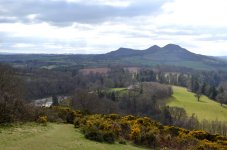 |
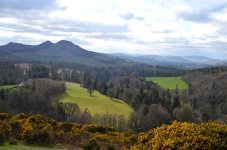 |
| RIGHT: The celebrated Scott's View |
General Impressions
Finally, here are some further miscellaneous photos of my visit to the region:
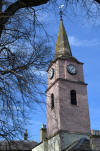 |
LEFT and TOP ROW RIGHT: Some general views of Jedburgh |
 |
 |
 |
 |
| RIGHT: The Tweed at Kelso |
 |
RIGHT: Typical Borders countryside |
 |
 |
St Mary's Loch
St Mary's Loch lies between Selkirk (in the Borders) and the former spa resort of Moffat (in Dumfries and Galloway). I drove the route on a wonderfully still and bright spring morning, which gave rise to mirror-like reflections on the surface. Notice how dry the ground looks, despite having just emerged from a Scottish winter!
Based at:
Mercure Barony Castle, Peebles
Best Western Plus Philipburn Country House, Selkirk
Linked report from same trip:





